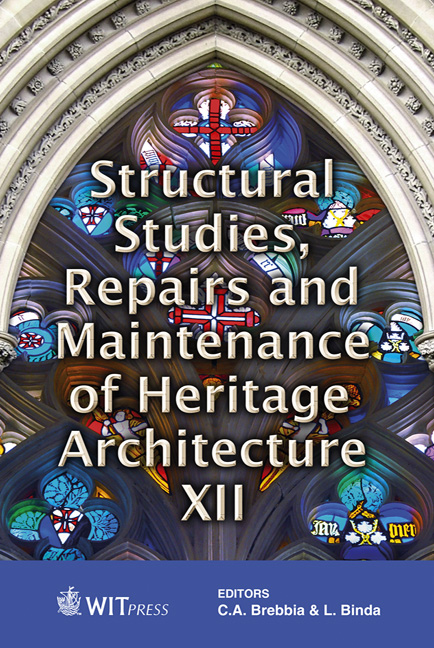A Study Of The Mechanical Behaviour Of Adobe Masonry
Price
Free (open access)
Transaction
Volume
118
Pages
12
Page Range
485 - 496
Published
2011
Size
915 kb
Paper DOI
10.2495/STR110401
Copyright
WIT Press
Author(s)
R. Illampas, I. Ioannou & D. C. Charmpis
Abstract
Adobe buildings are encountered in almost every region of the world and constitute a significant feature of the international cultural heritage. However, the behaviour of adobe materials and earth masonry has not yet been adequately investigated. This study aims to examine the mechanical properties of mud bricks from Cyprus and the structural response of adobe masonry. Experimental results obtained from the compressive and flexural strength testing of local adobes are presented and analyzed. In addition, the outcomes derived from the implementation of compression tests on adobe assemblages are discussed. Furthermore, the response of earth masonry to cycles of compressive loadingunloading is examined through numerical simulation. Finally, critical issues to be addressed by future research are identified. Keywords: adobe bricks, earth masonry, compressive strength, structural response, numerical simulation. 1 Introduction Earthen architecture has been traditionally used for thousands of years. Adobe structures, in particular, are encountered in almost every region of the world and are considered to possess significant historic and cultural value. Unfortunately, information regarding the mechanical behaviour of such structures and the properties of their building materials is, still, rather limited (i.e. [1–3]). As a result, internationally accepted building codes and regulations, such as Eurocode 6, either include definitions of scope which specifically exclude unfired clay or, more often, simply assume masonry to be constructed of stone, fired clay bricks or concrete blocks. Furthermore, the application of formal engineering
Keywords
adobe bricks, earth masonry, compressive strength, structural response, numerical simulation




